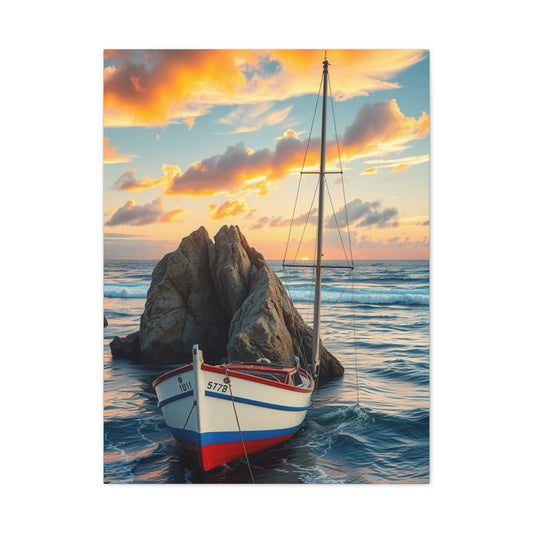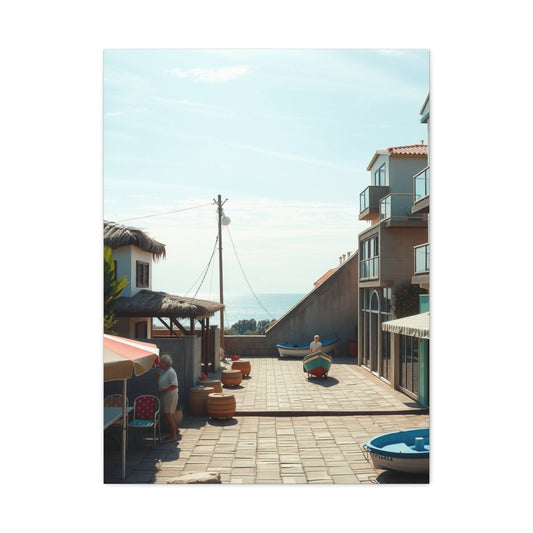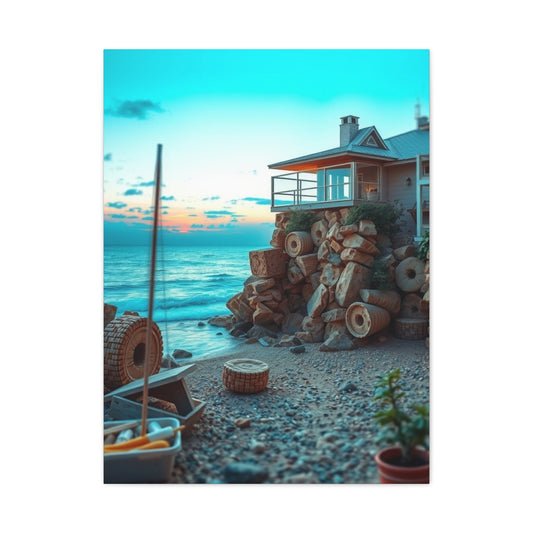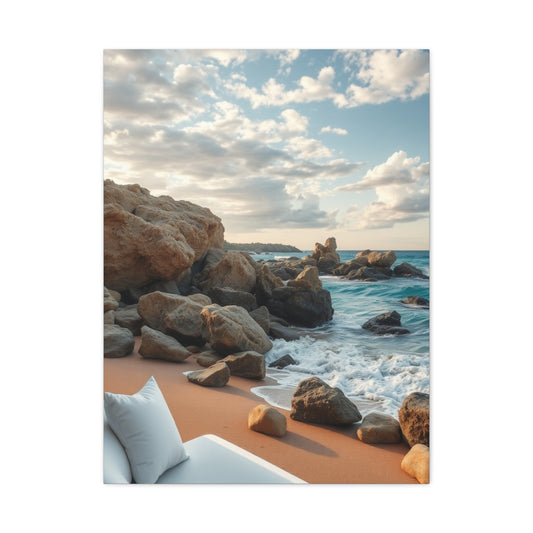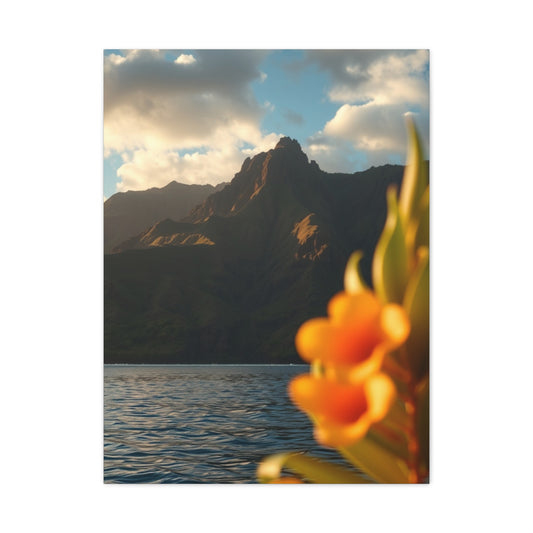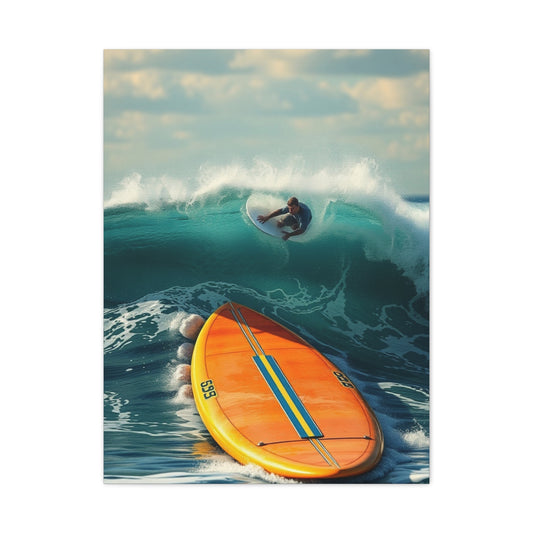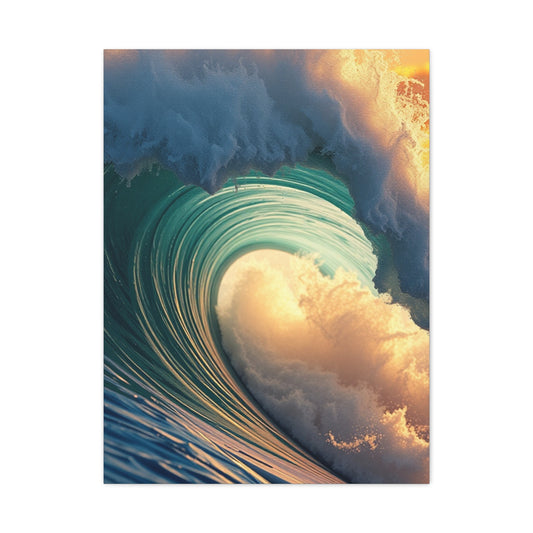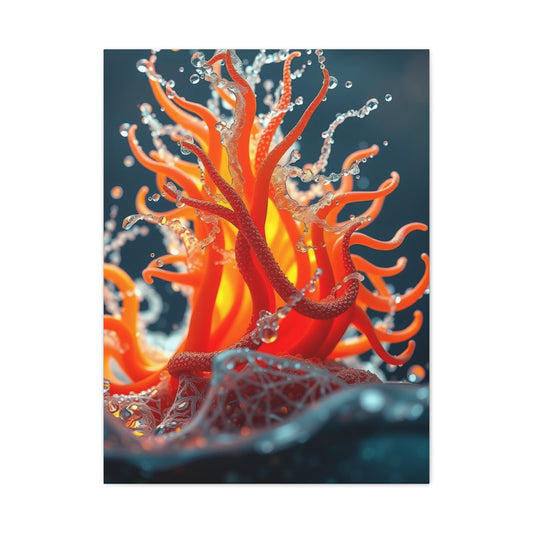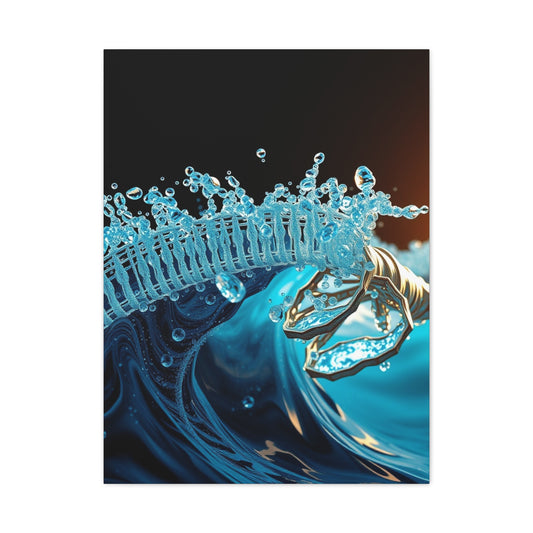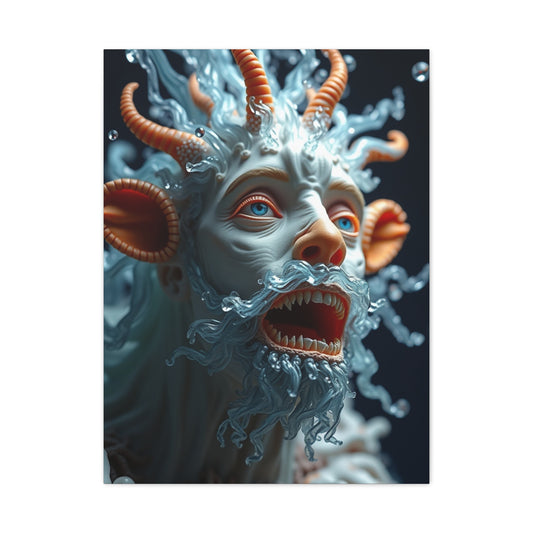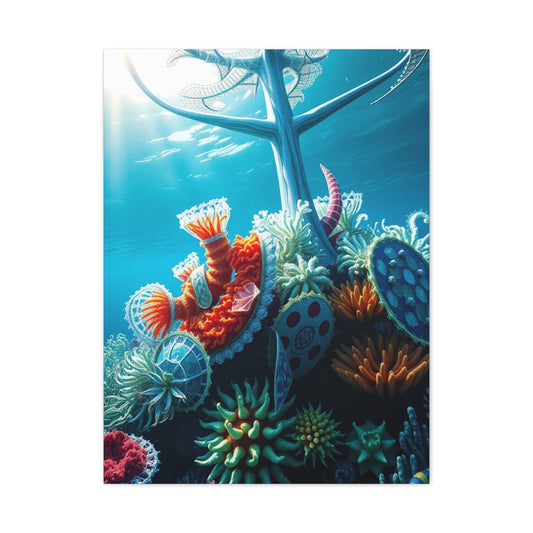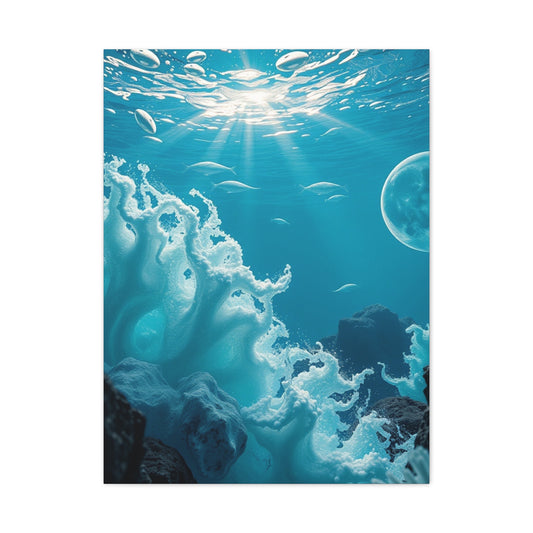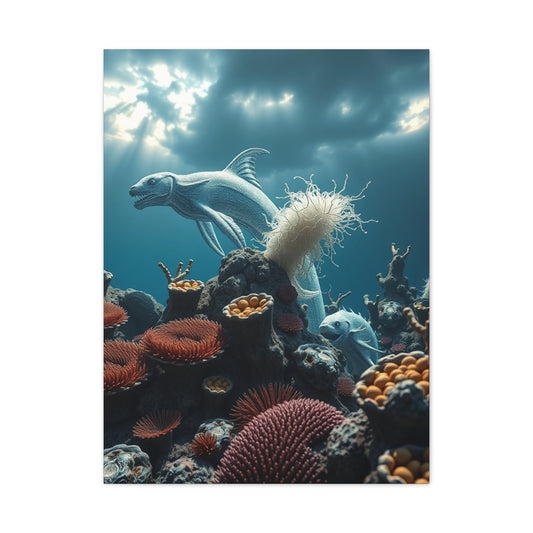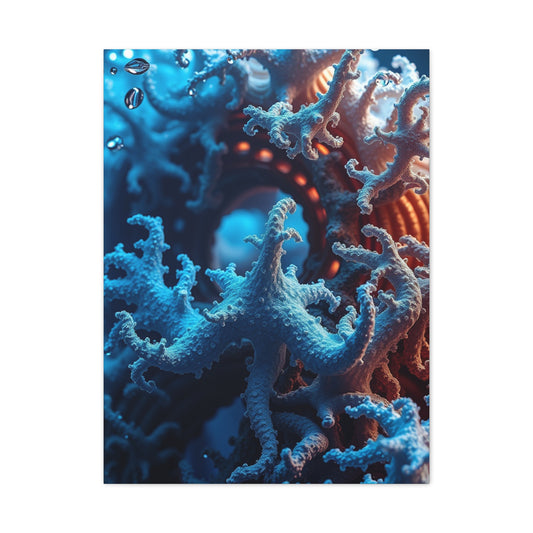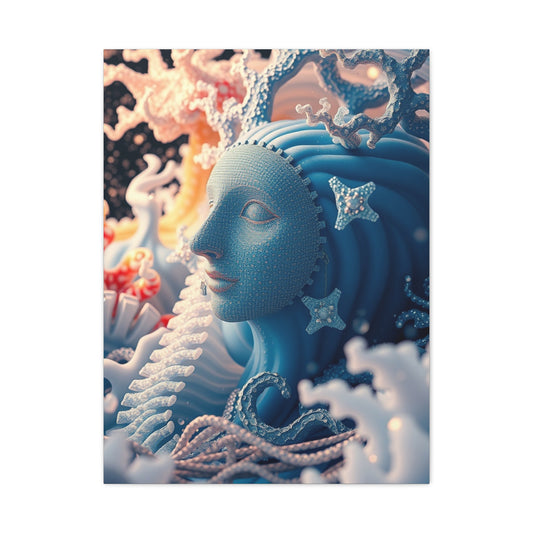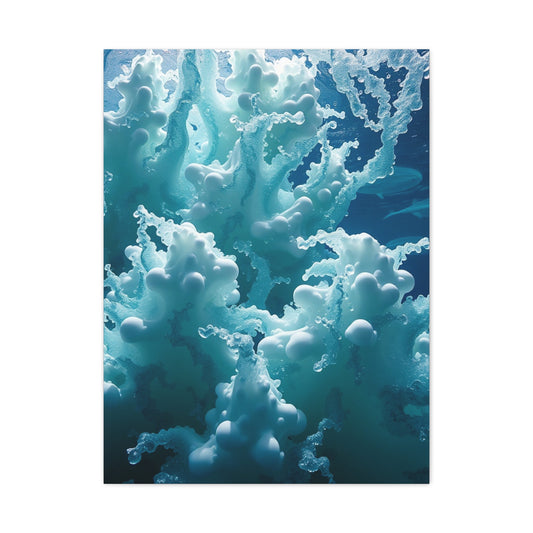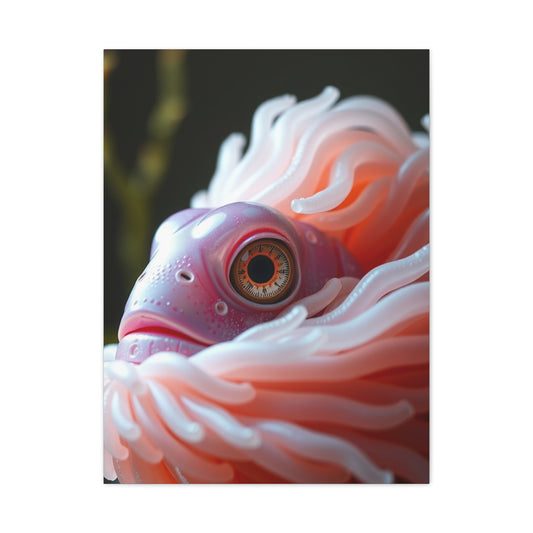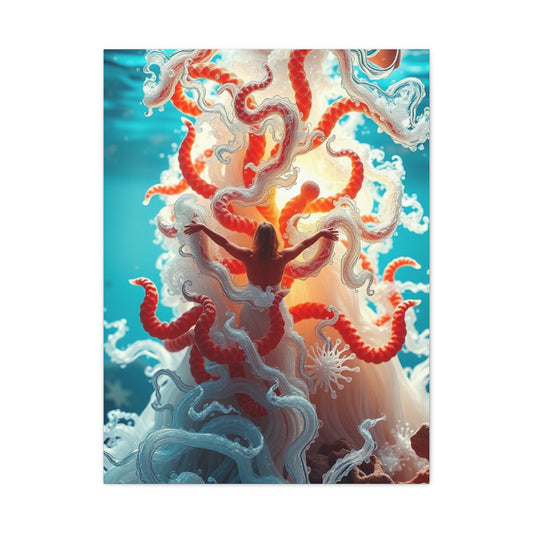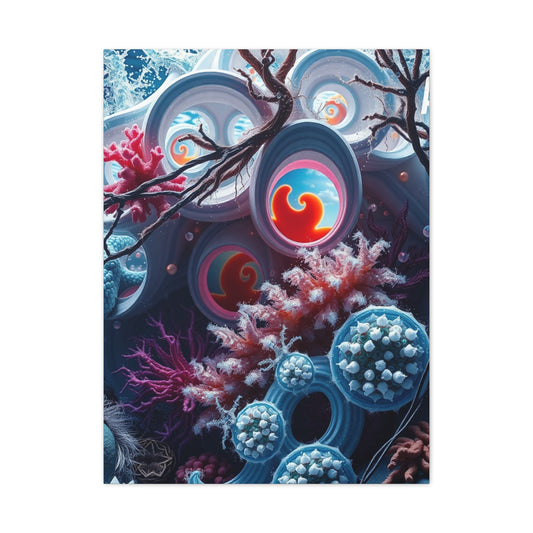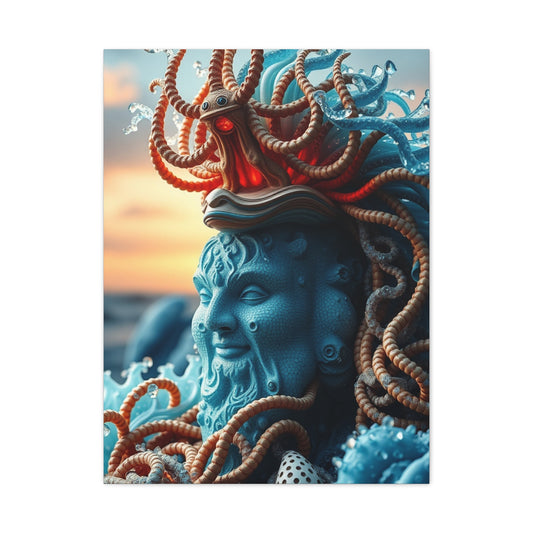Wall Art and Interior Design 2025: The Biggest Modern Style Shifts
Modern interiors in 2025 are evolving into sanctuaries of individuality, and at the heart of this transformation lies the elevation of wall art from accessory to anchor. No longer viewed as an ornamental afterthought, paintings and hand-crafted canvases are becoming the compass around which entire spaces are designed. This year is marked by a shift toward expressive storytelling, where every brushstroke brings depth, energy, and personality to a room. Homeowners, stylists, and design visionaries are gravitating toward pieces that not only complement the architecture but also shape its soul. At My Modern Art Store, this renaissance in art-driven interiors is most evident in the growing demand for bespoke, hand-painted collections that merge vibrancy, luxury, and intimacy.
Designers in 2025 are increasingly adopting a philosophy that treats art as the nucleus of interior styling. Whether it is a gilded abstract canvas radiating opulence or a multicolor explosion infusing playfulness, rooms are no longer constructed to merely house art—they are choreographed around it. This progression underscores the intrinsic dialogue between design and creativity, where walls become living narratives rather than silent boundaries.
Historical Background
To fully appreciate the rise of art-centric interiors in 2025, it is essential to trace the journey of wall art in design. Historically, art has always occupied a privileged position in domestic and cultural spaces. Ancient civilizations adorned temples and residences with frescoes, mosaics, and symbolic imagery, not only for aesthetic delight but also to convey mythology, power, and spirituality. The Renaissance redefined homes into galleries of intellect and prestige, where art collections mirrored social standing and cultivated taste.
During the 20th century, art began transcending aristocratic exclusivity. Movements like modernism and abstract expressionism encouraged art to break away from realism and enter the realm of emotion, geometry, and minimalism. Wall art became a medium for homeowners to assert individuality, while the mid-century modern era harmonized functional design with striking artistic statements. In the late 20th and early 21st century, the democratization of art, fueled by global accessibility, online galleries, and bespoke artisanship, made it possible for anyone to curate walls with intention and authenticity.
By 2025, the historical pendulum has swung once more. We are witnessing an era where wall art no longer passively accompanies interiors—it directs them. The canvas is not secondary to the sofa; it determines the color palette, furniture selection, and lighting composition. This reversal represents a profound return to art’s primal role: as a guiding narrative that elevates spaces beyond function into realms of emotional resonance.
Core Concepts and Foundations
The foundation of art-centric design in 2025 rests on several core principles. First is the idea of art as identity. Homeowners are treating their interiors as autobiographies, where each piece of wall art contributes a chapter. A luminous gold abstract might reflect aspirations of grandeur, while a monochrome minimalist piece could articulate clarity, order, and serenity.
Second is the principle of immersive storytelling. Rather than scattering decorative elements across walls, designers are curating immersive visual environments. An oversized canvas in a hallway, for example, can serve as both introduction and crescendo to the home, shaping the psychological tone of entry.
Third is the interplay of scale and spatial rhythm. Oversized paintings are increasingly being chosen to anchor large, open layouts, while textured mid-sized pieces create intimacy in lounges or bedrooms. The rhythm lies not in repetition but in contrast—juxtaposing a bold multicolor splash against neutral tones or pairing fluid organic brushwork with sharp, architectural lines.
Finally, art-centric interiors are grounded in authenticity and craftsmanship. Mass-produced prints are being eclipsed by demand for tactile, hand-painted works where each layer of paint is a testament to time, artistry, and originality. This commitment to authenticity ensures that wall art not only beautifies but also resonates. At My Modern Art Store, this ethos is embodied in collections like the Multicolor Abstract series, which thrives on dynamic energy, and the Gold Art Collection, which infuses spaces with timeless luminosity.
Types and Categories
The categories shaping 2025’s art-centric rooms reflect a spectrum of moods and philosophies, each offering unique pathways for homeowners to curate their environment.
Abstract Modernism remains the crown jewel of contemporary interiors. These pieces are versatile yet commanding, often employing gestural brushstrokes, geometric fragments, or layered color fields to awaken curiosity. Abstract works are not confined to a single interpretation, allowing rooms to evolve with shifting perspectives.
Nature and Botanical Narratives continue to surge, connecting interiors with the tranquility of organic life. Textured floral paintings, often created with thick oils or layered acrylics, offer serenity and a dialogue with natural light, perfectly complementing interiors built with wood, stone, or linen.
Urban and Graffiti-Inspired Art responds to the global appetite for metropolitan grit. These artworks radiate vibrancy, rebellion, and immediacy, injecting energy into lofts, creative offices, and industrial settings. A graffiti pop piece hanging on raw concrete achieves a balance of tension and harmony, encapsulating modern cosmopolitan aesthetics.
Minimalist Monochromes dominate interiors where restraint speaks louder than ornamentation. Black, white, and grey compositions create quiet power, punctuated by golden or metallic accents to break the monotony. These categories cater to homeowners who find elegance in simplicity yet yearn for a subtle edge.
Finally, Oversized Statement Canvases form a category of their own. These are not merely decorations but architectural interventions. A large-scale painting defines zones in open-plan homes, distinguishing a dining area from a lounge without erecting physical barriers. My Modern Art Store’s Abstract Large Paintings exemplify this trend, proving that a single canvas can be as influential as structural design.
Practical Applications
Translating these categories into lived spaces requires thoughtful orchestration. In living rooms, art becomes the gravitational force that unifies disparate elements—sofas, rugs, and lighting revolve around the dominant canvas. A gold abstract, for instance, may dictate the introduction of brass accents in lamps or coffee tables, ensuring cohesive luxury.
In bedrooms, softer pieces from the Nature & Floral Collection cultivate calm, with brushstroke textures echoing the tactile softness of linens and drapery. Here, art assumes a restorative role, where muted palettes and organic forms encourage serenity.
Workspaces and studios benefit from the kinetic vibrancy of graffiti or multicolor abstractions. A cityscape canvas above a desk can stimulate creativity and focus, while also delineating professional zones within residential layouts.
Hallways and transitional areas, often neglected, present opportunities for bold oversized pieces. These canvases not only break monotony but also provide narrative continuity, guiding inhabitants from one room to another through visual storytelling.
Dining areas, finally, are elevated when anchored by monochromatic or neutral-toned works. A grey-scale abstract behind the dining table establishes refinement while still allowing culinary presentation to take center stage. The result is a balance between ambiance and function.
Across all applications, the guiding rule in 2025 is to let art command the room. Lighting is adjusted to spotlight canvases, color palettes are derived from brushstrokes, and furniture is curated to complement rather than compete. By placing art at the core of decision-making, interiors transcend mere design—they become lived masterpieces.
Techniques and Methods
Designing interiors around art requires both instinct and methodology. In 2025, homeowners and designers are embracing a layered process that marries intuition with deliberate technique. One of the most effective methods is anchoring, where a single dominant canvas determines the palette, textures, and furniture selection of the room. Anchoring transforms a painting into the nucleus of interior choreography, ensuring cohesion without monotony.
Another vital method is juxtaposition, a strategy that celebrates contrast. A raw, graffiti-inspired piece can be set against soft neutral furnishings, generating a dialogue between chaos and calm. This method relies on tension, proving that harmony does not always stem from similarity but from well-orchestrated difference.
A third technique shaping 2025 interiors is layered repetition. Instead of displaying one large canvas, designers are arranging multiple complementary artworks along a single wall, creating rhythm and narrative progression. Triptychs, gallery-style arrangements, and mixed-scale compositions evoke the sensation of movement, guiding the eye like a visual symphony.
Texture-based methods are also gaining prominence. Rather than confining art to flat imagery, hand-painted canvases with raised brushstrokes and sculptural pigments extend depth into the room. When light grazes these surfaces, shadows form, giving the wall a living, dynamic quality. At My Modern Art Store, textured floral pieces and large-scale abstracts embody this methodology, enabling rooms to shift appearance as daylight transitions into evening glow.
Lighting, too, has become inseparable from wall art. Designers now employ track systems, directional sconces, and hidden LED accents to dramatize canvases. Illumination not only highlights color but also sculpts emotion. A golden canvas, when lit from below, radiates warmth reminiscent of candlelight; a multicolor abstract under focused light exudes vigor and immediacy.
Challenges and Common Mistakes
Despite the enthusiasm surrounding art-driven interiors, many fall prey to recurring missteps. One of the most common mistakes is treating wall art as an afterthought. Selecting furniture, rugs, and finishes first, and then hastily adding a painting, undermines the philosophy of art-centric design. The result often feels disjointed, with the artwork competing rather than leading.
Another challenge is scale misjudgment. Homeowners sometimes choose canvases too small for expansive walls, leaving the room feeling sparse and underwhelming. Conversely, oversized art in compact areas can overwhelm rather than inspire. The balance lies in proportion—ensuring the artwork neither dominates nor diminishes but resonates with the architecture of the space.
Color clashing represents another pitfall. While contrast can be powerful, unconsidered color combinations may create visual noise. For instance, pairing a vivid multicolor abstract with equally vibrant furniture can produce an over-saturated environment. Designers in 2025 advocate restraint: let one element shine while others support.
A subtler mistake involves neglecting lighting. Even the most breathtaking hand-painted canvas can appear flat without proper illumination. Many homeowners overlook the transformative potential of directed lighting, missing the chance to highlight depth, texture, and tonal nuance.
Finally, authenticity remains a persistent challenge. With mass-produced prints flooding the market, it can be tempting to choose inexpensive replicas. Yet such choices diminish the emotional and tactile resonance of a room. Hand-painted works not only provide uniqueness but also carry the intangible energy of creation. By choosing authentic pieces from curated collections, spaces retain depth and integrity.
Trends and Future Outlook
The trajectory of art in interior design points toward ever-deeper integration. In 2025 and beyond, we are seeing the emergence of immersive art environments, where entire rooms echo the palette, texture, and mood of a central canvas. Instead of art being hung as an isolated object, it becomes an atmosphere—wall colors, furnishings, and lighting mirroring the spirit of the painting.
Another trend is the rise of multisensory art integration. Designers are exploring artworks that engage not only sight but also touch and, in some experimental cases, sound. Textured canvases encourage tactile engagement, while digital installations merge projection with paint to create hybrid experiences.
Sustainability is also redefining the art-interior relationship. Eco-conscious clients are gravitating toward pieces created with natural pigments, recycled materials, and sustainable canvases. These choices harmonize with the broader design movement toward organic forms and environmental stewardship.
The future outlook suggests that wall art will increasingly blur the boundary between object and architecture. Murals, integrated wall sculptures, and oversized modular canvases will not simply decorate but structurally influence the spatial experience. With technology advancing, we may even see adaptive canvases—paintings that subtly shift hues in response to lighting or viewer interaction.
Expert Insights
Leading voices in the design world emphasize that art-centric interiors are not a fleeting trend but a paradigm shift. Architects note that building layouts are now being conceived with designated wall planes for oversized art. Interior stylists highlight the psychological impact: how a strategically placed painting can elevate mood, productivity, or relaxation.
Artists themselves stress the importance of emotional connection. They argue that in an age saturated with digital imagery, the tactile presence of paint on canvas offers grounding and authenticity. Collectors echo this, describing how a hand-painted piece becomes a personal dialogue, not just a decorative item.
At My Modern Art Store, curators observe an increasing demand for commissioned pieces. Homeowners want not only a painting but a narrative tailored to their life story. This signals a future where personalization will become the ultimate luxury, ensuring no two interiors are ever identical.
Step One: Understanding the Evolution of Expression
The story of wall art has always been intertwined with cultural shifts, aesthetic revolutions, and the deep human need for self-expression. In 2025, this story has reached a new crescendo, where art is not merely attached to walls but becomes the soul of interiors. Emerging trends reveal a blend of tradition and experimentation, where techniques are both hand-crafted and technologically enhanced. To understand the latest directions, one must first recognize that the wall has transformed into a canvas of identity, memory, and imagination.
Art collectors and homeowners are no longer satisfied with passive visuals. They demand resonance, depth, and texture that create dialogue rather than silence. A vibrant abstract that stretches across an open-plan living room does not simply decorate—it declares mood, perspective, and individuality. Similarly, muted neutrals in textured oil can whisper calm into intimate corners, offering respite in fast-paced modern lives. This evolution sets the foundation for what is trending now: a seamless interplay between personal stories and universal artistry.
Step Two: Recognizing Material Innovation
One of the most significant emerging currents in wall art today is the experimentation with materials. While canvas remains a classic surface, artists are increasingly exploring linen, wood panels, layered paper, and even reclaimed elements like metal sheets. These material explorations reflect society’s growing interest in sustainability and tactile authenticity. The layered strokes of acrylic over wood, for instance, not only create visual depth but also remind viewers of organic impermanence.
Texture has become central to the narrative. In the past, paintings were often appreciated from a distance; now, modern wall art invites touch and interaction. Raised surfaces, sculptural pigments, and embedded fibers make every canvas a three-dimensional encounter. As daylight shifts, shadows across these surfaces breathe new life into the painting, creating a dynamic interplay between light and matter. The result is not static decoration but a living entity within the room.
Step Three: Embracing Scale and Proportion
The demand for oversized artworks continues to rise, reflecting a trend that shows no sign of retreat. Large canvases are now essential in open layouts, serving as both boundary and magnet. A single bold painting in a hall or lounge does what partitions and walls cannot: it defines zones, enhances rhythm, and establishes emotional gravity.
Yet, proportion remains crucial. Emerging designers are not only focusing on massive works but also exploring series of smaller canvases arranged in curated patterns. Gallery-style walls composed of complementary abstracts or botanical studies evoke rhythm and visual storytelling. The step-by-step process of creating such arrangements involves selecting pieces that converse with one another, balancing color intensity, and ensuring spatial breathing room. These methods elevate the walls into orchestrated narratives rather than chaotic clusters.
Step Four: Integrating Technology with Tradition
Another defining trend of 2025 is the integration of digital innovation with hand-crafted artistry. While collectors still cherish brushstrokes and tactile paint, they are increasingly intrigued by hybrid pieces where traditional art meets projection mapping or subtle LED highlights. These artworks adapt with mood and environment, shifting tones during evening gatherings or brightening with daylight.
Such integrations require careful design to avoid novelty overshadowing artistry. The method involves beginning with a strong, hand-painted foundation and then weaving in technological accents to complement rather than dominate. This approach ensures the soul of the painting remains authentic while embracing the possibilities of modern innovation. The future of wall art lies not in abandoning tradition but in expanding its vocabulary.
Step Five: Aligning Art with Emotional Psychology
Beyond aesthetics, emerging trends emphasize the psychological impact of wall art. Designers and psychologists alike note that color, scale, and texture directly influence mood. Deep blues and greens promote tranquility, fiery reds and golds spark vitality, and soft neutrals encourage contemplation. When these emotional resonances are considered step by step during design planning, interiors become not only beautiful but therapeutic.
Homeowners are beginning to curate art as a form of personal well-being. A meditation corner may be framed by serene floral abstractions, while a creative workspace bursts with graffiti-inspired vibrancy. The trend reflects a broader shift: interiors as sanctuaries of mental and emotional alignment, guided by the potency of art.
Step Six: Cultivating Global Inspiration
Globalization has enabled a cross-pollination of aesthetics, and wall art in 2025 reflects this beautifully. Influences from African textile patterns, Japanese minimalism, Middle Eastern calligraphic strokes, and Latin American vibrancy are increasingly woven into contemporary canvases. Collectors seek pieces that not only reflect their personal identity but also engage with world cultures, celebrating diversity through visual dialogue.
The process of integrating global inspiration involves discernment. A canvas should not feel like a borrowed motif but a harmonious adaptation. Artists are blending cultural elements with modern abstraction, ensuring that homage does not slip into imitation. This trend ensures that walls become archives of interconnected heritage, echoing humanity’s shared artistic spirit.
Step Seven: Personalization as the Ultimate Luxury
Perhaps the most significant step in contemporary wall art trends is personalization. Commissioned artworks are on the rise, as clients request pieces that narrate their journeys, beliefs, or milestones. This move toward individuality transforms walls into autobiographical canvases. A personalized abstract may draw upon favorite hues, symbolic forms, or even embedded materials that carry emotional weight.
The method of commissioning involves dialogue between artist and patron. Sketches, mood boards, and story-sharing sessions precede the final piece, ensuring authenticity and resonance. In this trend, the artwork transcends decoration, becoming a visual embodiment of memory and aspiration.
Step Eight: Anticipating Future Shifts
Looking ahead, wall art is expected to expand its role as an architectural partner. We may soon see adaptive canvases that respond to light, motion, or sound in subtle ways, creating multisensory environments. Sustainability will continue to influence both materials and methods, as artists experiment with eco-friendly pigments, recycled canvases, and organic binders.
The future promises a blend of timeless hand-painted authenticity and forward-looking innovation. What will remain constant, however, is the human desire for meaning, connection, and beauty expressed through walls that speak.
Crafting Harmony Between Art and Architecture
The final stage of curating modern interiors in 2025 is not simply about acquiring a painting but about ensuring that the piece enters into dialogue with the architecture itself. Walls are no longer passive partitions; they are active stages upon which art performs. When a canvas is chosen with intention, its hues echo through floor finishes, its textures resonate in upholstery, and its form converses with the geometry of the room. This fusion creates a sense of totality, where the dwelling transforms into a unified expression rather than a collection of disparate components.
Architects increasingly collaborate with artists at the earliest phases of planning, ensuring that certain planes, alcoves, or lighting schemes are reserved specifically for statement pieces. This synergy reflects a new philosophy: the home is not merely a backdrop for art but a frame in which art and design evolve together.
Emotional Resonance in Domestic Spaces
One of the most profound shifts of the decade is the recognition of art’s psychological impact on daily living. Wall art is not simply an external ornament; it penetrates the emotional atmosphere of interiors. A sunlit floral abstraction can elevate mornings with serenity, while a dramatic monochrome can imbue evenings with contemplative depth. These emotional cadences matter, particularly in an age where homes serve multiple roles—as offices, sanctuaries, and spaces of gathering.
Designers are now trained to consider emotional resonance as seriously as aesthetics. This results in interiors that not only please the eye but also restore balance, sharpen focus, or stimulate creativity. The role of wall art in this realm is unparalleled, for no other element has the same power to transform mood with immediacy.
The Role of Scale and Placement in Design Narratives
Scale has emerged as one of the decisive tools for shaping interiors through wall art. Oversized canvases create gravity and structure, often defining zones in expansive open-plan homes. Smaller works, when arranged with rhythm, create intimacy in corridors or bedrooms. Placement is equally critical. A painting positioned slightly above eye level elongates ceilings, while a canvas placed lower establishes grounding and intimacy.
In practice, these nuances turn an ordinary space into a sophisticated narrative. Every choice—whether a vibrant cityscape dominating a loft wall or a serene neutral canvas framing a dining table—becomes part of a choreography that defines how a room is experienced.
Sustainability and Conscious Curation
Sustainability is no longer an optional consideration; it is now woven into the very fabric of interior design philosophy. In 2025, wall art embodies this consciousness with a vigor that redefines how collectors and homeowners curate their environments. The act of choosing a painting has expanded beyond aesthetics—it has become a gesture of ecological solidarity.
Artists are exploring materials that align with the rhythms of the earth rather than disrupting them. Pigments derived from minerals, plants, and natural dyes are replacing synthetic formulas, producing hues that feel both organic and enduring. Reclaimed wood frames breathe second life into what would otherwise be discarded. Biodegradable surfaces ensure that creativity leaves no scar on the planet. Handmade canvases, often woven from natural fibers, evoke a tactile honesty that mass production could never replicate.
The embrace of sustainability has also resurrected appreciation for artisanal production. In an era dominated by mechanical replication, hand-crafted works stand out as beacons of individuality. Each brushstroke bears the imprint of the artist’s humanity, ensuring that art remains as much about process as product. This ethos aligns with ethical practices, as collectors increasingly seek transparency—wanting to know not only what materials were used but also how and by whom the work was created.
When placed within interiors, sustainable artworks create resonance that extends beyond beauty. They radiate values of stewardship and awareness, reminding those who dwell in these spaces that design choices are inseparable from ethical living. To own such a piece is to declare allegiance to a lifestyle where beauty and conscience walk hand in hand. It transforms the act of curation into a statement of responsibility, merging aesthetics with ecological mindfulness.
Imagine a modern lounge where sunlight falls upon a large abstract canvas made from organic pigments. The strokes shimmer not only with visual vibrancy but also with the knowledge that the piece embodies harmony with the earth. That awareness subtly alters the atmosphere, turning the room into more than a designed space—it becomes a sanctuary of respect for nature and a celebration of sustainable artistry.
The Fusion of Global Inspirations
The twenty-first century has become an age of cultural interconnectedness, and wall art has emerged as one of the most eloquent translators of this global dialogue. In 2025, the most compelling interiors are those that carry the echoes of diverse traditions while still maintaining originality.
Arabic calligraphic strokes, fluid and meditative, lend spiritual gravity to otherwise minimalist rooms. African geometric patterns, bold and rhythmic, infuse energy and heritage into modern lofts. Japanese wabi-sabi textures, understated yet profound, whisper the poetry of imperfection, reminding us that beauty often resides in transience. Latin American vibrancy, filled with saturated tones and folkloric motifs, injects life into neutral palettes, invigorating them with passion and joy.
What distinguishes these global inspirations today is not mere replication but reinterpretation. Artists and designers are blending cultural influences with contemporary abstraction, creating works that feel respectful yet innovative. For example, a large-scale canvas might layer African-inspired motifs with modern color gradients, producing a dialogue that honors both tradition and modernity. This sensitivity ensures that cultural elements are not reduced to aesthetic ornaments but are woven into living, evolving narratives.
For homeowners, curating such globally inspired works is an act of both self-expression and cultural appreciation. It results in interiors that feel expansive, cosmopolitan, and deeply human. Walls transform into archives of interconnectedness, carrying stories from distant geographies into personal domestic spheres. The outcome is a home that feels both rooted and outward-looking—an intimate space that simultaneously embraces the world.
Future Pathways for Art and Design Integration
The future of wall art promises to be as dynamic as the art itself. One of the most fascinating trajectories is the rise of adaptive canvases—works designed to respond to light, time of day, or even the emotional state of the viewer. While rooted in technological experimentation, these artworks still retain the essence of traditional painting, often starting with hand-painted foundations and layering subtle adaptive features.
Imagine a painting that shifts gently in tone as morning sunlight pours into the room, brightening to reflect energy, and later softens as evening descends, creating tranquility. Such pieces would not only decorate but also interact with the rhythms of daily life, weaving themselves seamlessly into the lived experience of interiors.
Multi-sensory environments are also emerging as a frontier. Artworks that engage touch through textured surfaces are already prominent, but future designs may combine tactile engagement with subtle soundscapes or ambient responses to movement. This evolution positions art not as a static object but as a dynamic participant in spatial life.
Yet, even amid such innovations, the timeless appeal of authenticity remains. Collectors continue to cherish the tactile intimacy of brush on canvas, the visible traces of an artist’s presence. No technological marvel can replace the human soul embedded in hand-painted work. The future, therefore, is not a replacement of tradition but an expansion—where craftsmanship and innovation collaborate to push the boundaries of experience without eroding authenticity.
The Collector’s Perspective in 2025
Perhaps no transformation is more telling than the shift in how collectors approach art. In previous decades, acquisition often centered on alignment with trends or market value. Today, however, collectors seek resonance above all. They want works that narrate their lives, evoke treasured memories, or reflect deeply held values.
Personalization has emerged as the pinnacle of this evolution. Commissioned artworks allow patrons to collaborate directly with artists, shaping works that carry their own stories. This dialogue often begins with intimate exchanges: conversations about cherished colors, symbolic forms, or emotional milestones. The resulting painting is not a mere object but a narrative artifact—unique, irreplaceable, and tied forever to the life of its owner.
This intimacy elevates the collector-artist relationship into something profoundly collaborative. It transforms art from a commodity into a partnership, where every brushstroke embodies not only the artist’s vision but also the collector’s essence. In a world of mass production and homogenized design, such singularity represents the ultimate form of luxury.
Imagine a family commissioning a large abstract where layers of blue represent generational heritage, golden streaks symbolize triumphs, and textured depths mark moments of resilience. When such a canvas takes its place in the living room, it is more than decoration—it is the visual autobiography of a household, a silent witness to their past and an emblem of their future.
In this way, the collector’s role is no longer passive but deeply participatory. Art is not simply acquired; it is co-created. The interior that houses such a piece transcends ordinary design—it becomes a living museum of personal meaning, where every wall carries testimony to the story of those who inhabit it.
Conclusion:
As we step deeper into 2025, wall art has transcended its role as accessory and emerged as the beating heart of interior design. Homes are no longer curated as mere shelters but as canvases of identity, emotion, and aspiration. Each hand-painted piece becomes both anchor and atmosphere, shaping how rooms are lived in, remembered, and felt.
The enduring message is clear: art is not separate from life but an essential expression of it. Walls, once silent, now speak with depth, texture, and color, echoing stories of individuality and universality alike. Whether through oversized abstractions, delicate florals, or graffiti-inspired vibrancy, modern interiors in 2025 remind us that to live artfully is to live meaningfully.

